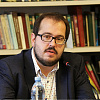Many developments that significantly impacted the destinies of the regional players, non-regional actors, and many people around the world have unfolded during the year that followed the publication of our paper titled “
The Middle East and the Future of a Polycentric World” (February 2023).
Many of these developments appeared to continue the positive trends that we saw a year or two earlier. Saudi Arabia – Iran relations were officially normalised. Syria’s membership in the Arab League was reinstated. Egypt, Iran, the UAE, and Saudi Arabia joined BRICS. Tensions continued to de-escalate in Yemen, with official visits exchanged between Sanaa and Riyadh in April and September 2023. The maritime and aerial blockade eased up, commercial activities at Yemeni ports picked up pace, and air service with Sanaa was partially restored.
Many developments that significantly impacted the destinies of the regional players, non-regional actors, and many people around the world have unfolded during the year that followed the publication of our paper titled “The Middle East and the Future of a Polycentric World” (February 2023).
Many of these developments appeared to continue the positive trends that we saw a year or two earlier. Saudi Arabia – Iran relations were officially normalised. Syria’s membership in the Arab League was reinstated. Egypt, Iran, the UAE, and Saudi Arabia joined BRICS. Tensions continued to de-escalate in Yemen, with official visits exchanged between Sanaa and Riyadh in April and September 2023. The maritime and aerial blockade eased up, commercial activities at Yemeni ports picked up pace, and air service with Sanaa was partially restored.
However, the situation had drastically changed by the end of the year. The longstanding Israeli-Palestinian confl ict re-emerged on the regional and global agenda and became the focal point of all regional conflicts in a matter of days. This fact shouldn’t have come as a surprise to analysts, because the conditions for this have always been there. Nevertheless, only some of them, including the authors of this paper, argued in recent years that this knot of contradictions held a central place in the inventory of Middle East regional conflicts.
The Report: Gaza. Yemen. Epicentres of Pain. Feelings, Myths, and Memories in the Middle East
Source: Valdai. Discussion club





